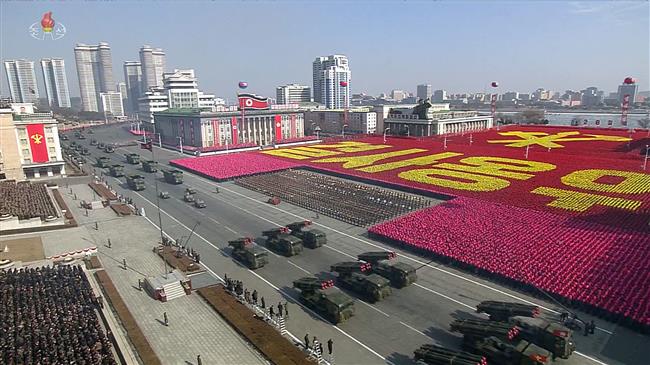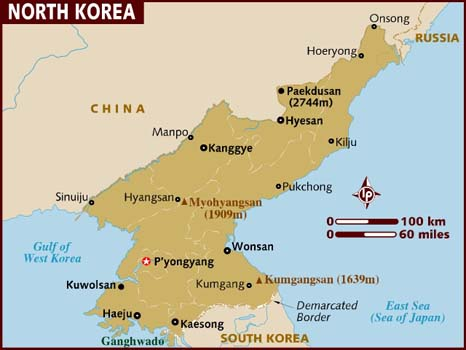Pyongyang celebrates 70th anniversary
September 10, 2018 | Expert Insights

North Korea hosted a parade featuring soldiers, along with columns of tanks and heavy artillery.
However, it did not show off the intercontinental ballistic missiles that are thought to be capable of reaching the United States.
Background
The Korean peninsula was divided post World War II in 1945. In 1950, North Korea, supported by China and Russia, invaded South Korea. The United Nations and US forces intervened on behalf of the South and the invading army was driven out during the Korean War. The two nations signed an armistice in 1953, however, there has been no peace treaty and they are technically still at war.
While South Korea opened up its market and instituted a system of democracy to become one of the most technologically advanced nations in the world, the modern nation of North Korea exists in self-imposed isolation. It runs on a totalitarian system under the dictatorship of Kim Jong-un. In recent years, the North Korean nuclear programme has become a source of concern for the US and the international community, resulting in UN-imposed sanctions.
The Korean War ended in an armistice but not a peace treaty. An end-of-war declaration would only be the first step toward an eventual peace treaty, but many in Washington fear that such a declaration could be used to undermine the legitimacy of the U.S. troop presence in South Korea.

Read more about our extensive analysis of the North Korea-US rapprochement here.
Analysis
The parade held in Pyongyang was a low-key celebration of North Korea’s 70th anniversary. Unlike the previous parade staged in April 2017, this was a tepid affair which did not feature any ballistic missiles or signs of heightened tensions with the United States.
The parade, which marks the 70th anniversary of the founding of the Democratic People’s Republic of Korea, began with ranks of soldiers, followed by tanks, trucks carrying rocket launchers and heavy artillery. Much of the parade was dedicated to civilian efforts to boost the economy, the Associated Press reported, underscoring a major policy shift announced by the country’s leader, Kim Jong Un, earlier this year to focus on economic development. Another major theme was the reunification of the Korean Peninsula, carved into two by the Soviet Union and the United States after World War II.
The absence of nuclear-capable missile systems was seen as a conciliatory gesture during a period of intense diplomatic outreach and negotiation.
The choice to not display the ICBMs suggests Kim’s intention to underline the seriousness of his ‘New Strategic Line,’ announced earlier this year that focuses on the country’s economic improvement after the ‘completion’ of the country’s nuclear deterrent last year. It may also suggest that as long as negotiations are on, North Korea’s nuclear-capable systems will maintain a low profile.
Some tanks carried traditional slogans calling on the army to “Destroy the U.S. Imperialist Aggressor, the sworn enemy of the DPRK.” However, that imagery was balanced with flowers and coloured balloons, floats on the economy and unification, and spectators waving flags of a unified Korea. The parade comes at a sensitive time as the United States and South Korea try to engage the North in a denuclearisation process. However, while South Korea’s President Moon Jae-in is due in Pyongyang for a summit with his North Korean counterpart from Sept. 18 to 20, talks with the United States have hit a roadblock over who should make the next move.
There had been speculation that Chinese President Xi Jinping might make his first trip to Pyongyang for the parade. However, he sent Li Zhanzhu, the head of the National People’s Congress and the third in rank in the Communist Party hierarchy.
Li stood at Kim’s right during the parade, underlining the marked improvement in relations between the two neighbours this year, with Kim travelling to China three times to meet Xi. Kim was seen laughing and holding hands with Li as he oversaw the celebrations.
The improvement in relations is based on years of China being North Korea’s prime military hardware supplier. As Pyongyang lacks a major domestic manufacturing sector for automobiles, the military trucks, armoured personnel carriers and self-propelled artillery displayed in the parade were all of the Chinese origin.
Assessment
Our assessment is that North Korea is showing signs of reduced hostility towards the United States without letting down its guard. Pyongyang appears to remain rigid in its stances, however, we believe that this possible “olive branch” is a chance for Seoul to further their aim to open up high level dialogue regarding peace settlements, denuclearisation, and a de-escalation of aggressions. As stated earlier, we believe that North Korea would feel more confident with its Southern neighbour than with the US.








Comments